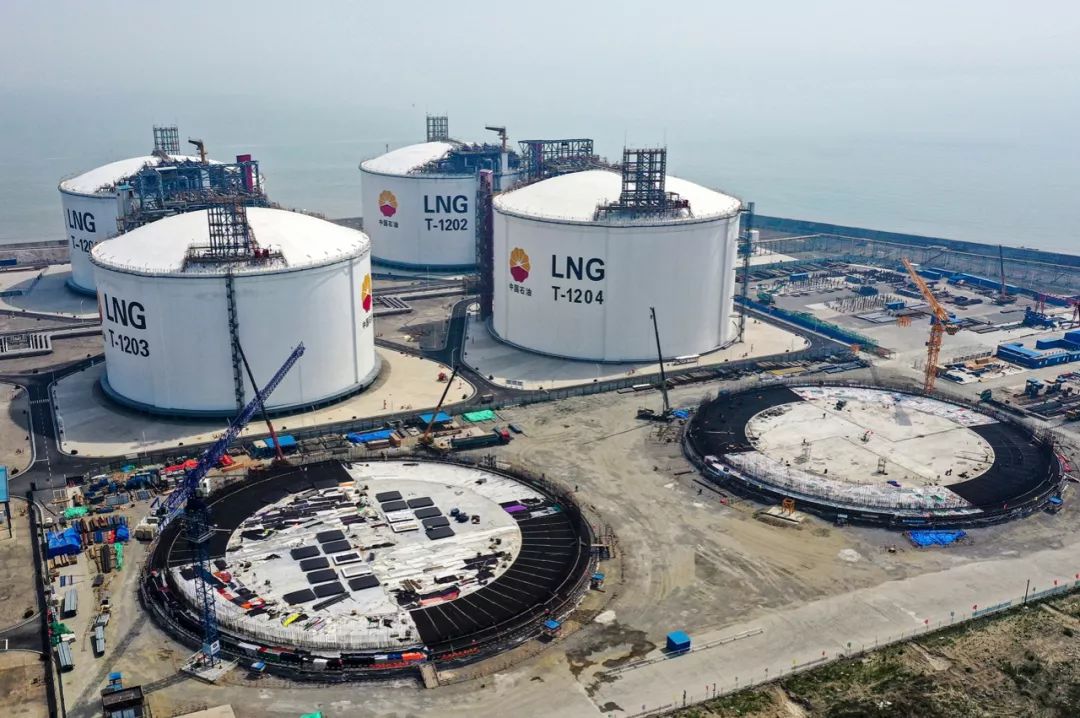Internal temperature distribution of plate fin heat exchanger in liquefaction system:
1) Nitrogen expansion cycle: the heat exchange temperature difference at the two ends and middle parts of the heat exchanger is very small, and the heat exchange temperature difference at other parts is large. However, there are certain requirements for the minimum heat transfer temperature difference in the design of the heat exchanger, which can not be too small. In general, the distribution of heat exchange temperature difference is uneven, the temperature difference is large, and the irreversible loss is large, so the shaft power demand of the corresponding compressor will be greater;
2) Nitrogen methane expansion cycle: the cooling capacity in the low-temperature part of the heat exchanger is provided by the throttle valve. The mixer of nitrogen and methane throttles and cools down. Due to the high methane content, the temperature difference at the cold end after throttling is small. After the temperature rises, methane and nitrogen vaporize quickly, providing a large amount of cooling capacity, resulting in a large temperature difference in the heat exchanger and the vaporized mixed gas continues to rise, Sensible heat is used to provide cooling capacity for high-pressure liquid natural gas, and the temperature difference begins to take effect. After it is reduced to a certain value, the cold fluid is mixed with the low-temperature gas at the expander outlet to continue to provide cooling capacity for the system. The minimum temperature difference inside the cold box is at the hottest end, the coldest end and the confluence of throttled fluid and expansion fluid, Moreover, the average temperature difference of heat exchanger is also less than that of nitrogen expansion liquefaction cycle;
3) MRC: the heat exchange temperature difference at the low-temperature end inside the heat exchanger is small, and the temperature difference is large when it is close to normal temperature. This is mainly because isopentane is used to replace butane in the refrigerant. After the compressed mixed refrigerant is cooled by seawater, isopentane in the refrigerant is condensed into liquid. In the throttled mixed refrigerant, isopentane begins to vaporize at a higher temperature, with a large latent heat of vaporization. This part of cooling capacity can not be consumed when natural gas and high-pressure mixed refrigerant in the heat flow are cooled, Thus, the heat exchange temperature difference in this section is large. However, using isopentane instead of butane as high boiling point refrigerant can not only reduce power consumption, but also increase the heat exchange temperature difference, which is very beneficial to the whole system;
With the increase of the number of stages of the refrigeration cycle, the power consumption of the refrigeration system decreases, and the refrigeration coefficient and exergy efficiency increase, but the influence of the increase of the number of stages on the refrigeration performance decreases. The increase of refrigeration cycle stages will increase the complexity of the process and reduce the operability. The optimal stages of refrigeration systems with different scales are different. The larger the scale is, the more the optimal stages are;
MRC includes cycle with precooling and cycle without precooling. Precooling cycle also includes pure refrigerant precooling and mixed refrigerant precooling. The mixed refrigerants in these cycles are divided into different stages. The liquid separated from each stage is subcooled and throttled for refrigeration, and the separated gas continues to be cooled and separated. The separation stages are different, the complexity of the process is different, and the efficiency of the refrigeration cycle is different;
37、 In the process design of MRC, it is necessary to optimize the process structure and select the appropriate cycle number. MRC includes single-stage MRC, two-stage MRC, three-stage MRC and multi-stage MRC. These refrigeration cycles are currently used. Different stages of refrigeration cycle, different refrigeration power consumption and different complexity of process need to be selected according to different processing scale. MRC optimization includes structure optimization and process parameter optimization;
Post time: Nov-01-2021



